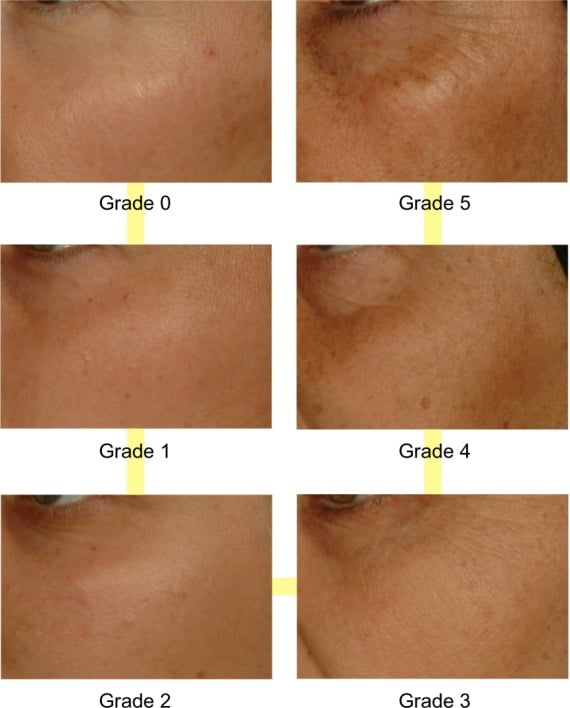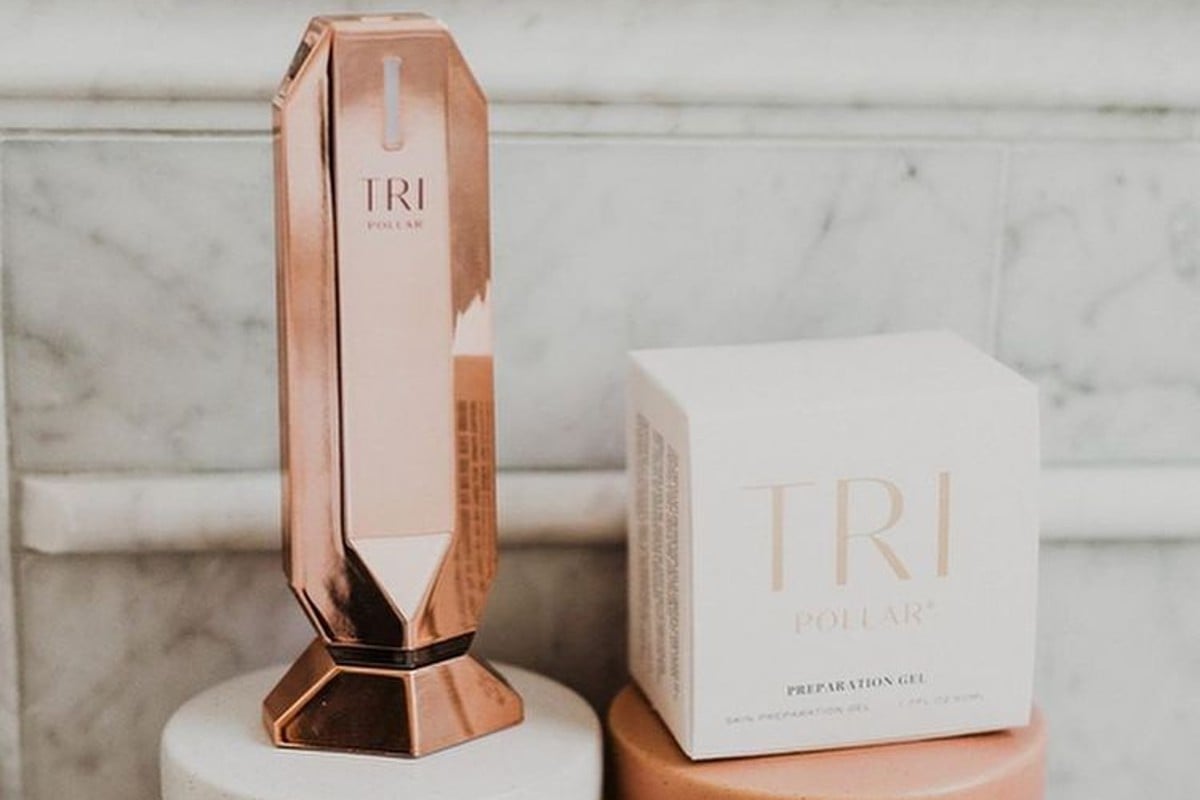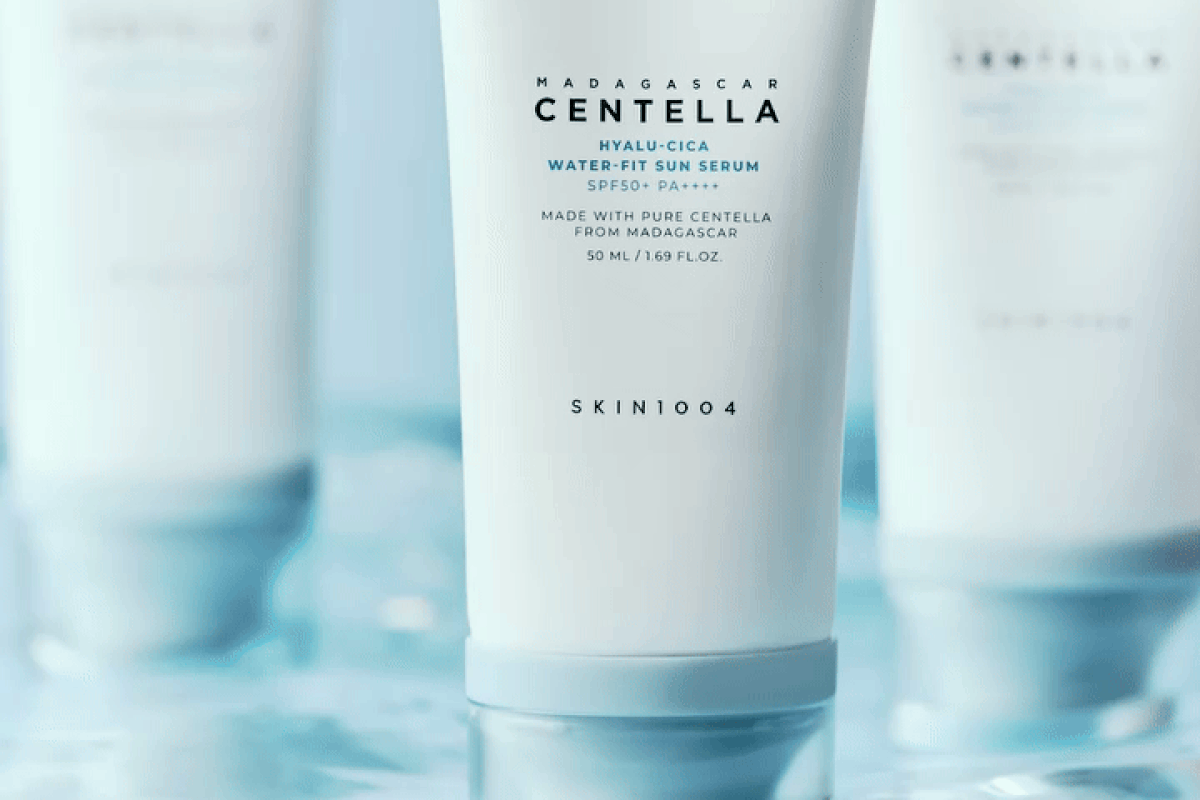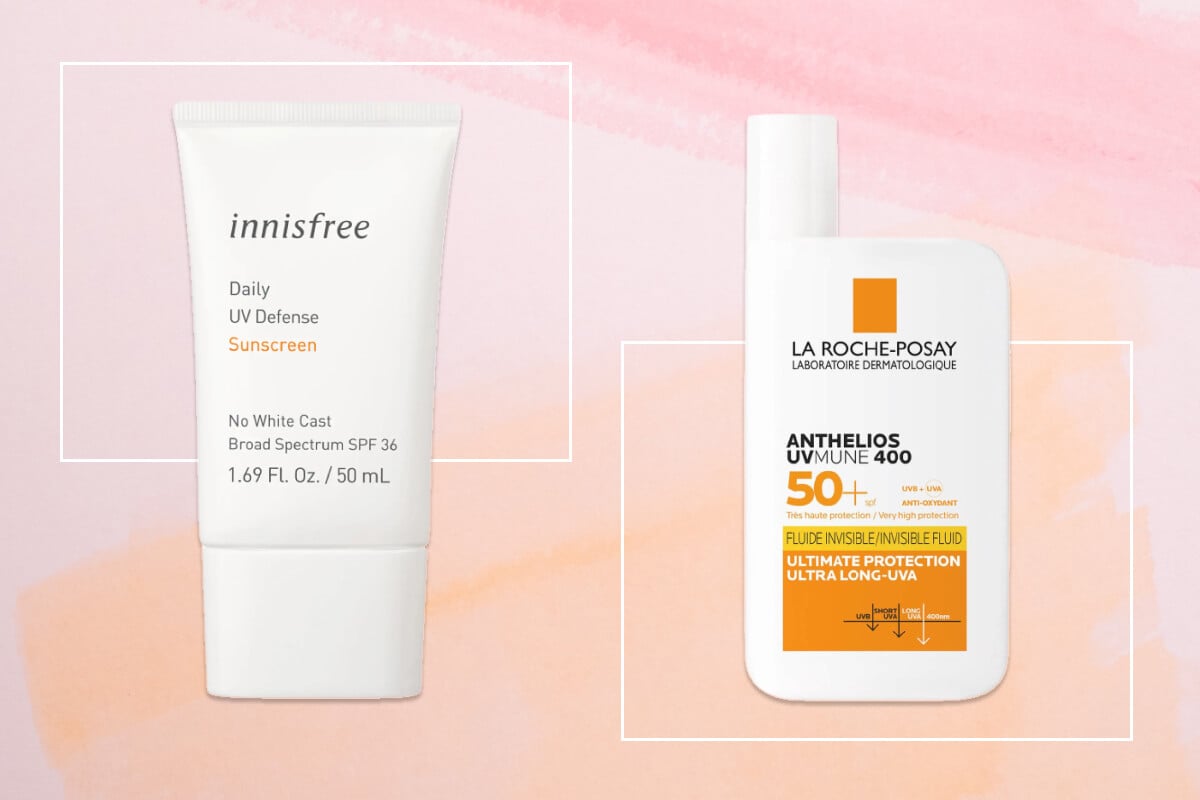As a skincare consultant, I’ve been telling this for years: sun exposure poses the greatest threat to our skin. A staggering 80% of facial aging can be traced back to sun damage as well as other bad things like sunburns, eye damage, and, worse of all, skin cancer. The culprits? UVA and UVB, which are lurking all year round, even on cloudy days when you’d think you’re safe. However, skin that defies the aging effects of the sun is not just a dream—it’s within your reach. Learning how to protect yourself comes down to understanding the effects of UV radiation on the skin and the differences between UVA and UVB rays.
What is UV light?
UV (ultraviolet) light is a type of electromagnetic radiation emitted by the sun and some artificial sources like tanning beds. Two types of UV radiation reach the ground, UVA and UVB. Approximately 95% of the UV light that reaches us is UVA, while the rest of 5% is UVB.
Although our eyes can’t see them, their impact on the skin and overall health is real and should be addressed with proper UV protection. UVA rays penetrate deep into the skin and contribute to long-term damage, such as premature aging and sunspots. On the other hand, UVB rays affect the outer layer and are responsible for sunburns and skin cancer.
However, there are more key differences between UVA and UVB lights that you need to account for, which we’ll discuss later in the article. For example, UVB gives your body a boost in vitamin D, so avoiding it entirely might not be the best idea after all. Moreover, the factors affecting the intensity of UVB rays differ from those of UVA. This means the protective measures you’ll need to take against each of them may vary.
Our hope against the harmful effects of UV radiation? Sun protection products. Sunscreens are a promising solution because they can reflect or absorb UV light before entering the skin and affecting the cells. To get the best results from your sunscreen, you need one labeled as “broad-spectrum coverage,” which means it provides protection against both UVA and UVB.
Be aware of the SPF rating of your sunscreen. The SPF rating is related to protection from UVB and ranges between 15 to 50+, with higher numbers providing greater protection. To put this into perspective: SPF 15 filters about 93% of UVB, while SPF 30 blocks around 97%, and SPF 50+ around 98%.
UVA: associated with skin aging
UVA light makes up about 95% of all UV radiation from the sun that reaches the Earth’s surface. It has higher wavelengths but lower energy levels than other types of ultraviolet radiation. Because of their low energy levels, UVA lights are less likely to cause immediate visible effects like sunburn. That’s a bad thing because they wreak havoc on your body without giving you warning signs to let you know it’s time to take action.
While UVA light may be slightly less intense than UVB and may not give you an instant sunburn, its long-term effects go beyond the surface level of your skin. It messes with your DNA and every single cell over time.
With their longer wavelengths, UVA can penetrate deeper into the skin all the way down to the dermis (the second layer of the skin.) It affects the main proteins that make up the skin structure, collagen and elastin. As a matter of fact, UVA radiation causes proteins to break down faster than aging and contributes to about 80% of facial wrinkles.
More worrying is the fact that UVA light can penetrate clouds, windows, and even some clothing, unlike UVB rays, which are partially blocked. Even on cloudy or overcast days or in winter months, UVA radiation is still present and can potentially cause irreversible damage to your skin.
The skin actually has a built-in system to reduce UVA damage by producing melanin (skin-darkening pigment), resulting in a tan. However, no tan is healthy. Over time, UVA exposure leads to photoaging, defined by wrinkles, dark spots, and loss of firmness and elasticity.
A study found that the visibly harmful effects of UVA radiation only appear after years of prolonged unprotected exposure. They also show that skin sensitivity to UV light is linked to the skin phototype, meaning light-colored skin is more sensitive to UVA than dark-colored skin.[1]
UVB: associated with skin burning but needed to make vitamin D
UVB rays, also known as the “burning rays,” are a major culprit in causing sunburn and skin cancer. These rays have a higher energy level compared to UVA and primarily affect the outermost layer of your skin, known as the epidermis. While it’s somewhat reassuring that only 5% of UVB radiation reaches the Earth’s surface, it still poses a year-round threat to your skin. The good news is that they don’t penetrate glass and can be partially filtered out by protective measures such as clothing and hats.
But let’s not overlook that UVB light also plays a vital role in your overall well-being. It stimulates your skin to produce vitamin D, a crucial nutrient for various bodily functions. So you must find a balance between obtaining enough vitamin D and protecting your skin from excessive UVB exposure. Research suggests that direct sunlight for 10 to 30 minutes per day is sufficient to meet your vitamin D needs. Going beyond that won’t do you any favor. Remember, though, that sunlight isn’t the sole source of vitamin D. Paying attention to your diet is equally important in ensuring you maintain optimal levels of this essential nutrient.
Indeed, sunscreen and clothing block the absorption of UVB sunlight into the skin, hence blocking natural vitamin D production. However, studies found that the impact and risk are very low, and there’s no solid evidence to show that everyday sunscreen use can cause vitamin D deficiency.[2]
Differences between UVA and UVB rays
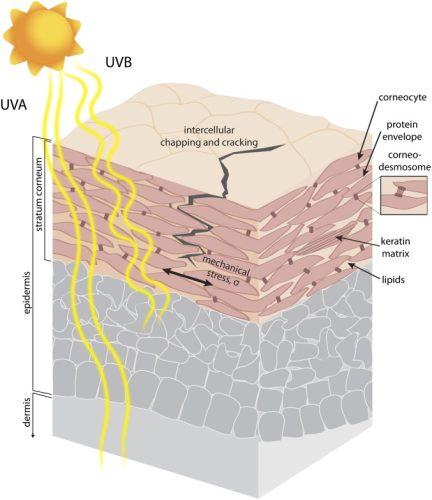
For starters, UVA rays have longer wavelengths and penetrate deeper into the skin compared to UVB rays. While UVB primarily affects the surface layers of the skin, UVA destroys the protein fibers that maintain the skin’s structure. The damage caused by UVA rays contributes to the development of a tan, whereas UVB rays are responsible for sunburn. Although both types of radiation are implicated in skin cancer, UVB poses a higher risk in this regard. On the other hand, UVA rays are largely responsible for the premature aging of the skin, leading to the appearance of wrinkles, discoloration, and loss of elasticity.
Another difference between UVA and UVB rays is their ability to penetrate clouds and glass. While UVA rays are relatively unaffected by these obstacles, UVB rays are partially blocked by clouds and do not penetrate glass, meaning you get some protection indoors.
Why avoiding sunlight might not be the best approach for your health
While it’s true that constant exposure to UV rays is bad for your skin health and can be a leading factor in a series of problematic conditions, taking a more critical look at the effects of sunlight on various body functions reveals that UV rays act as a double-edged sword. In one sense, UV radiation generates DNA-damaging molecules called free radicals that affect every cell and tissue in our skin. In another sense, UV, specifically UVB, provides the necessary our skin needs to produce vitamin D, which is required for a lot of essential processes inside our bodies.
So no, sun exposure is not bad for you, but unprotected and prolonged exposure is, especially during peak sun hours in a summer month. Spending up to 20 minutes each day in the sunlight will not harm you. In fact, it can be beneficial. You can take even longer sunbathes and keep your skin safe by wearing sunscreen and protective clothing.
When are UV rays most dangerous?
According to the American Cancer Society, a few factors influence the strength of the UV rays reaching the ground. UV rays are strongest between 10 AM and 4 PM and are more harmful during the spring and summer months. UVA light can also penetrate clouds and windows and can bounce off surfaces like water, sand, snow, or even grass—that’s why we need broad-spectrum sunscreen with SPF 30+ all year round.
UVB rays are also particularly intense at higher altitudes, so those mountain adventures come with an extra dose of sunburn risk.
The ozone layer provides some protection from UV radiation. But pollutants have caused the ozone layer to thin and become less effective at reflecting UV. If you live in a polluted city, there might be a chance the UV intensity will be stronger and pose more risks of sun damage.
Effect of sun exposure on aging signs
How to protect against UV damage
Seek shade during peak sun hours
Try to stay in the shade or indoors, especially between 10 AM and 4 PM.
Say no to UV tanning beds
Instead, find a product that tans your skin without the need for exposure to UV light, such as a tanning lotion. Even better if it’s natural.
Use broad-spectrum sunscreen
Every time you go out, 30 minutes before, use broad-spectrum sunscreen covering all parts of your face, chest, and neck. If you have to stay outdoors for a long time, use sunscreen with at least SPF 30. Always reapply every two hours if you’re swimming or sweating excessively. Just keep in mind that one common ingredient in sunscreens, oxybenzone, has been shown to be harmful to coral reefs. Look for oxybenzone-free sunscreens that use alternative ingredients, like zinc oxide or titanium dioxide, if you’re planning to swim or visit beaches with coral reefs. And don’t count on the SPF in your moisturizer or foundation.
Wear protective clothing
Clothing is an effective barrier against the sun’s ultraviolet rays. Many fabrics offer UV protection and breathability at the same time. The more skin you cover, the better it is. Also, a hat with a wide brim (3 inches or more) helps a lot because it shades your face, ears, and neck. And remember, the sunglasses you wear should block UV—otherwise, your eyes and skin around them are not protected.
Antioxidants
In addition to sunscreen, antioxidants are your second line of defense against free radicals. Why? Because antioxidants act as scavengers, intercepting and neutralizing the reactive molecules generated by UV exposure before they can damage the skin cells. Studies confirmed that exposure to UV leads to the oxidation of cells that could be prevented by prior antioxidant treatment.[3] As far as skincare is concerned, vitamin C is one of the best antioxidants because it also increases collagen production. Simply apply an antioxidant-rich serum in the morning, and your skin will be better equipped to encounter external threats.
Avoid using exfoliants during the day
Chemical exfoliants and retinoids are an essential part of our skincare routine, but they come with a price: they temporarily make skin photosensitive. Both treatments cause the peeling of the outermost layer of the skin, which leaves the skin vulnerable to UV damage until it fully regenerates. That’s why you should never use them during the day. Leave exfoliants and retinoids for your nighttime routine.
Keep your skin barrier strong
Your skin’s outermost layer serves as a barrier against UV radiation and other external aggressors. A compromised skin barrier translates to a heightened susceptibility to sun damage. That’s where ceramides, cholesterol, and fatty acids come in—they are vital building blocks of a strong protective barrier. Additionally, incorporating zinc and probiotics into your skincare regimen can further reinforce this barrier. By using a night cream that contains these ingredients during your evening routine, you can restore your skin’s natural defenses and make it more resistant to provide added protection against UV light.
Learn more about how to strengthen your skin barrier.
You ask, we answer
- How does skin color affect sensitivity to UV rays?
Melanin, the pigment that defines skin color, acts as a natural sunscreen, providing some level of protection against UV radiation. People with darker skin tones generally have more melanin, which offers greater protection against both UVA and UVB. So light-colored skin is more sensitive to sun damage than dark-colored skin.
- Can certain medications or medical conditions make the skin more susceptible to UV damage?
Some medications, such as certain antibiotics, tretinoin, diuretics, antihistamines, and nonsteroidal anti-inflammatory drugs (NSAIDs), can increase sensitivity to UV radiation and make the skin more prone to sunburn. Medical conditions like lupus, porphyria, and xeroderma pigmentosum (XP) can also heighten skin sensitivity to UV radiation. These conditions may impair the skin’s natural ability to repair damage caused by the sun and increase the risk of sunburn, skin rashes, or other adverse reactions upon sun exposure.
- Are specific areas of the body more prone to UV damage?
The head, face, neck, hands, and arms are more prone to sunburn because these body parts are the most exposed to UV light.
- How does UV damage affect different types of skin?
In oily skin, studies found that UVB may directly activate the functions of the sebaceous gland to produce more sebum, which results in a greasy appearance and increased chances of acne breakouts. For dry skin, sun damage can further exacerbate dryness and flaky patches, and in sensitive skin, it may cause rashes.
References
Women’s Concepts uses reliable sources, including dermatologists’ insights, clinical trials, and scientific journals, to find accurate information and support all the facts shared in our articles. All statements and claims have clear and legit references. Read our editorial policy to learn more about our sources of information, our process of researching and fact-checking the content, and how our team strives to keep all articles updated, completed, and trustworthy.
- Battie C, Jitsukawa S, Bernerd F, Del Bino S, Marionnet C, Verschoore M. New insights in photoaging, UVA induced damage and skin types. Exp Dermatol. 2014 Oct;23 Suppl 1:7-12. doi: 10.1111/exd.12388.
- Neale RE, Khan SR, Lucas RM, Waterhouse M, Whiteman DC, Olsen CM. The effect of sunscreen on vitamin D: a review. Br J Dermatol. 2019 Nov;181(5):907-915. doi: 10.1111/bjd.17980. Epub 2019 Jul 9. PMID: 30945275.
- Petruk G, Del Giudice R, Rigano MM, Monti DM. Antioxidants from Plants Protect against Skin Photoaging. Oxid Med Cell Longev. 2018 Aug 2;2018:1454936. doi: 10.1155/2018/1454936. PMID: 30174780.

